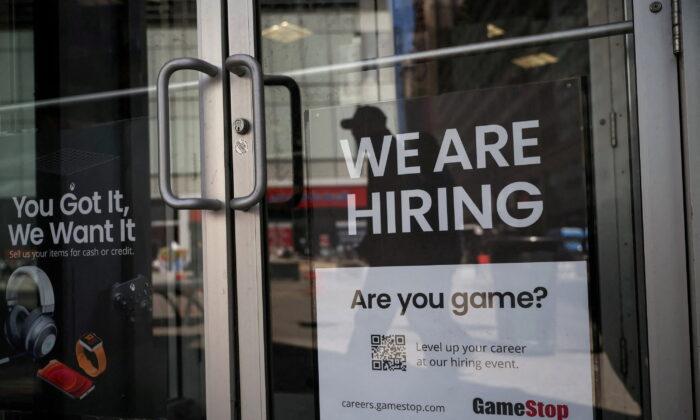Small businesses are struggling to hire owing to a shortage of qualified applicants, while also being challenged by inflation, according to reports by the National Federation of Independent Business (NFIB).
“The labor force participation rate remains below pre-COVID levels, which is contributing to the shortage of workers available to fill open positions,” said NFIB chief economist Bill Dunkelberg. “Small-business owners are struggling to take advantage of current sales opportunities.”
When it comes to hiring, 59 percent hired or attempted to hire last month, down one percentage point from February. Among this group, 90 percent reported they could only find a few qualified applicants, or none at all, for the positions which they were trying to fill. While 26 percent of owners said they could find only a few qualified applicants for their positions, 27 percent reported none.
Only a net 15 percent of small-business owners now plan on filling up their open positions, down two percentage points from February. This is well below the 23 percent peak hit in September.
Job Openings, Hirings
The number of job openings nationwide fell from 10.8 million in January to 9.9 million in February, according to the NFIB. Job openings far surpassed the number of unemployed workers, which was at 5.94 million in February and 5.84 million in March.“The labor market continues to be a big challenge for small-business owners. The media is focusing on layoffs at high-tech firms, but those have little impact on labor supply for small firms,” said the report.
“The first casualty of a weakening labor market will be job openings, followed by slower hiring. Job openings are about the same as January 2022 levels, some signs of a weakening trend. When sales soften enough, actual layoffs will occur and initial claims for unemployment benefits rise. March seems to indicate continued tight labor markets.”
Meanwhile, hiring slowed down more than expected in March. U.S. employers added 236,000 jobs last month, which is below economists’ expectations, as well as less than the 326,000 job additions in February, according to the recent U.S. employment report.
Quadrupling Layoffs
The first quarter of 2023 saw job cuts rise by 396 percent compared to the same period a year ago, according to an April report by outplacement firm Challenger, Gray & Christmas, Inc. The total number of job cuts announced by U.S.-based employers during this period came in at 270,416, which is the highest first-quarter number since 2020.The number-one reason cited by companies for the job cuts was market or economic conditions, followed by cost-cutting in second place.
A recent survey by Bankrate found that 56 percent of adults in the U.S. workforce are more likely to seek out a new role over the next 12 months. Analysts at Bankrate see a potential recession and high layoff activity as the main factors likely spurring employees to look for new jobs.





